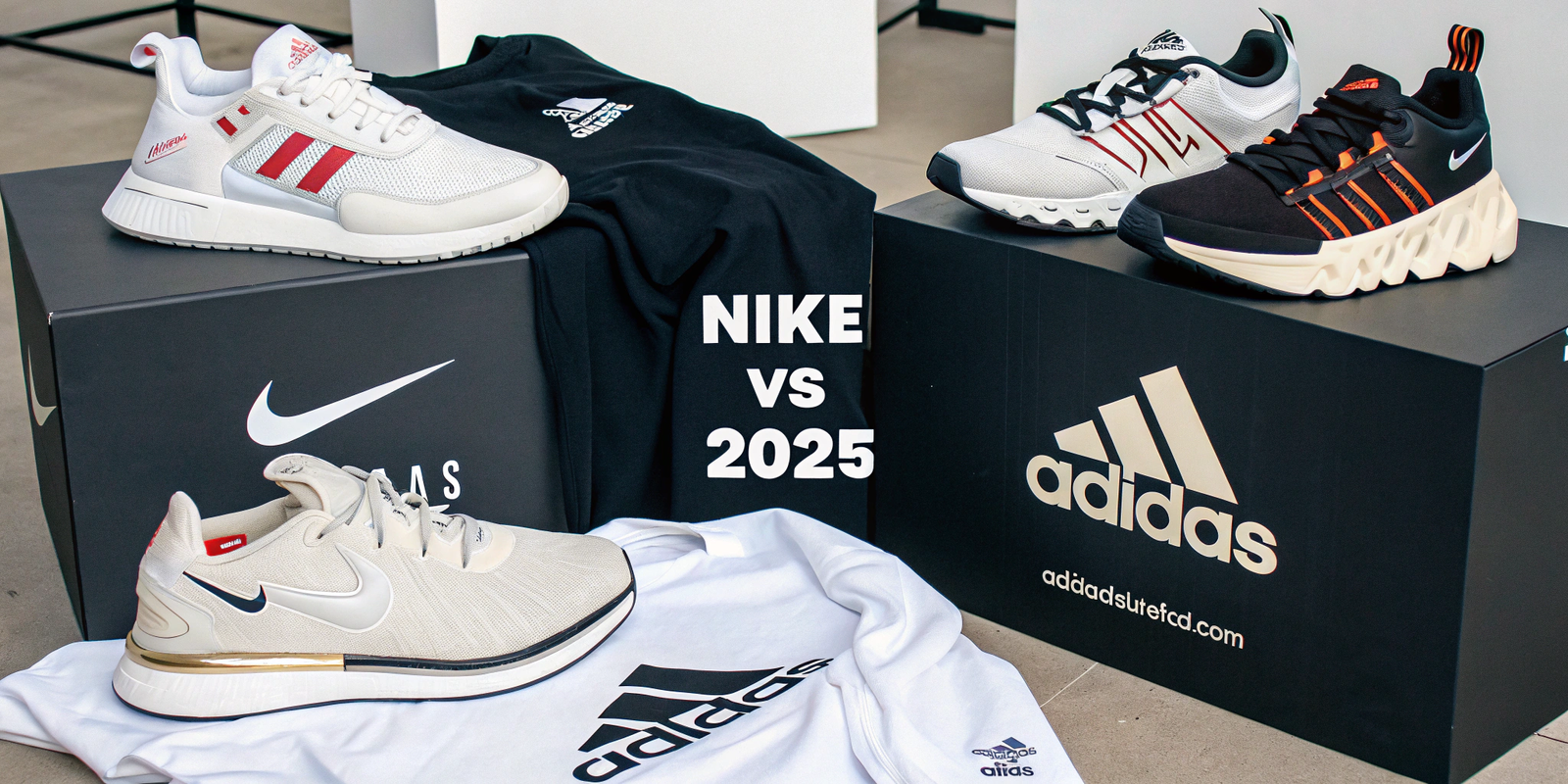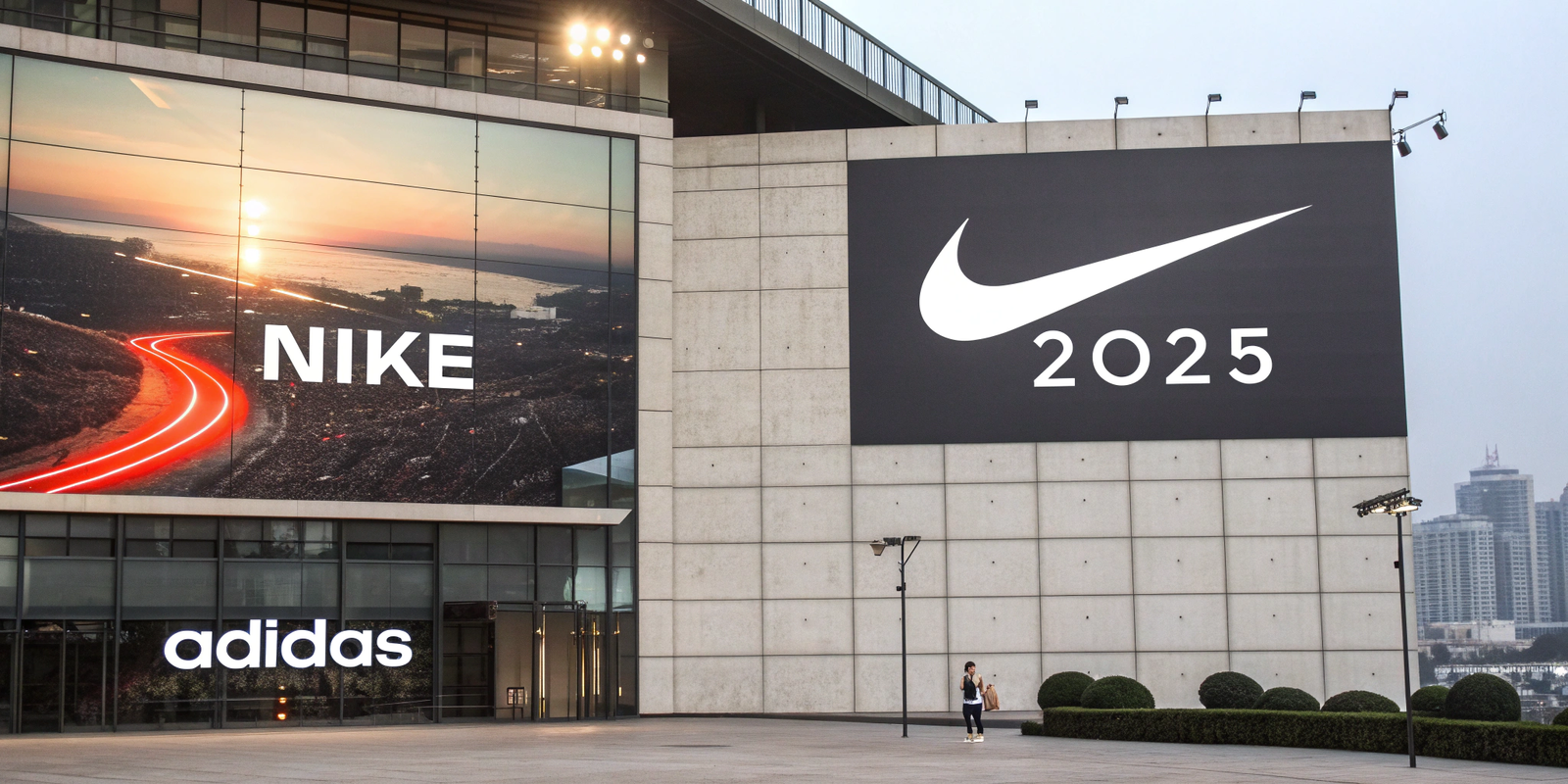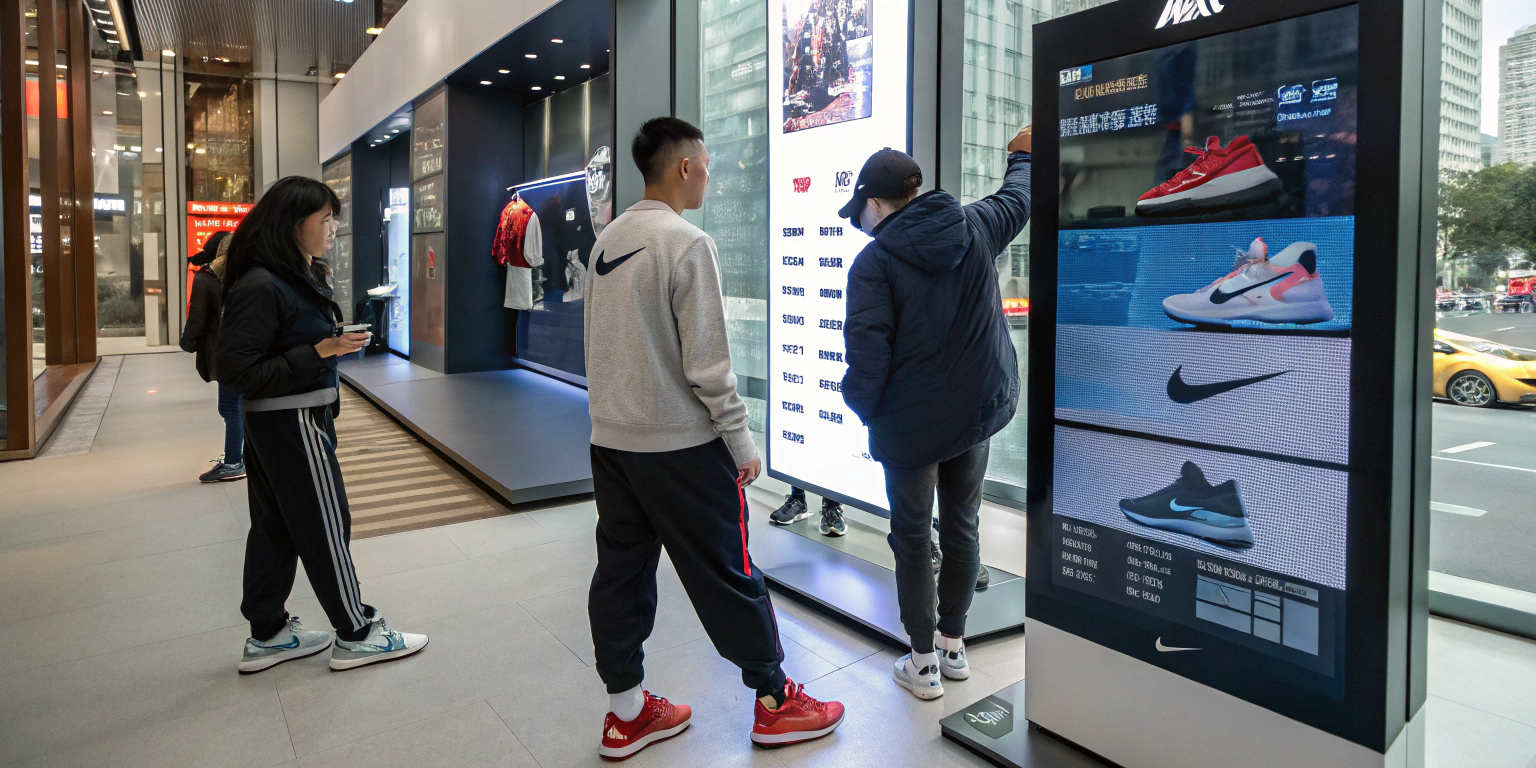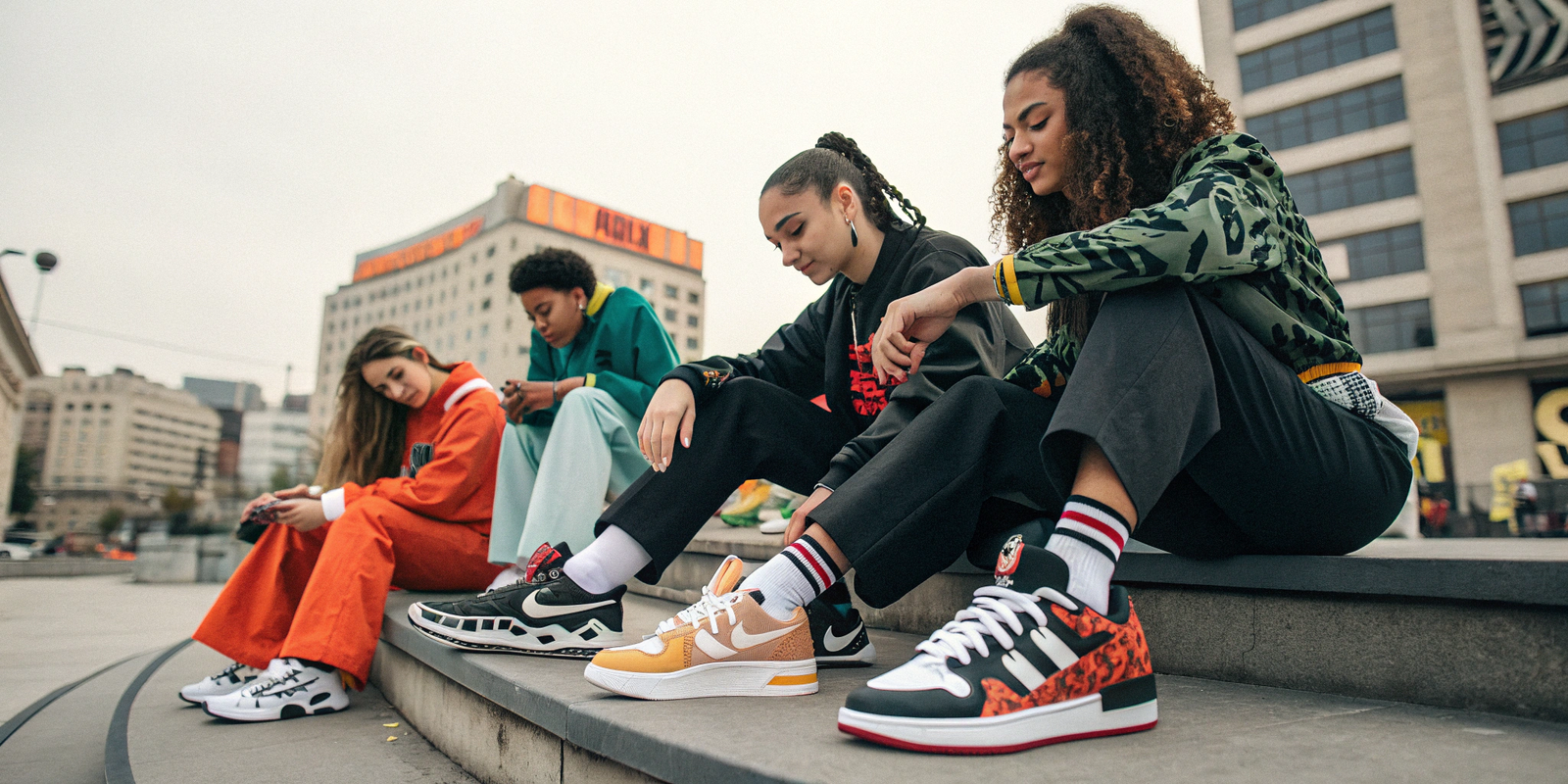The Battle of Shoe Giants: Nike vs. Adidas in 2025
Problem: Are you curious about which sportswear titan, Nike or Adidas, truly dominates the global market in 2025? Do you wonder how these two giants continue to battle for consumer loyalty and market share? Agitation: It can be challenging to sift through diverse reports and marketing claims to understand the real competitive landscape between such established brands, leaving you unsure who's truly leading the race. Solution: Let's dive into an analysis of Nike and Adidas in 2025, comparing their strategies, market focus, and consumer perception to determine their current standing in the fierce world of athletic footwear and apparel.
In 2025, Nike continues to maintain its position as the larger brand globally in terms of revenue and market share, though Adidas remains a strong competitor, particularly gaining ground in specific markets and sustainability initiatives.

Having been in the footwear industry since 1998, watching giants like Nike and Adidas operate has been a masterclass in global business. At Lucas, we might be a different scale, but the principles of design, market responsiveness, and understanding consumer needs are universal. The rivalry between Nike and Adidas isn't just about shoes; it's a constant evolution of innovation, marketing, and cultural influence. It's truly a fascinating battle to observe, shaping the entire industry.
Who is bigger in 2025: Nike or Adidas?
Problem: Do you often hear strong opinions about whether Nike or Adidas is the undisputed leader in sportswear, yet feel unsure about the actual data for 2025? Do you want to know which brand truly holds the crown in terms of size and influence? Agitation: Conflicting reports and brand loyalty debates can make it hard to get a clear picture of the current competitive landscape, leaving you to wonder about the real market dynamics between these two titans. Solution: Let's examine the most recent market indicators and business strategies to determine which brand holds a larger global footprint and market capitalization in 2025.
In 2025, Nike remains the larger company by a significant margin in terms of overall revenue, market capitalization, and global brand recognition. While Adidas is a formidable challenger with strong regional presence and innovation, Nike’s broader product portfolio and deeper market penetration solidify its top position.

From my vantage point in the manufacturing side of the footwear industry, the sheer scale of Nike is consistently impressive. While both companies are massive, Nike's global reach and brand power continue to give it an edge, even in 2025.
How Does Revenue and Market Share Compare?
Based on recent industry reports and financial disclosures, Nike consistently reports higher annual revenues compared to Adidas. This gap has been maintained over several years. For instance, Nike's annual revenue typically exceeds Adidas's by a substantial percentage, sometimes even double. This is not just due to sales volume but also Nike's diverse product categories. They have significant strength in basketball, running, and lifestyle footwear. They also have a very strong apparel segment. Adidas, while strong in football (soccer) and lifestyle, particularly with its fashion collaborations, has not yet matched Nike's overall brand breadth and distribution network. Nike also holds a larger global market share in the athletic footwear and apparel industry. This is driven by its strong presence in key markets like North America and China.
Market capitalization also shows Nike's larger size. The total value of Nike's outstanding shares usually sits comfortably above Adidas's, indicating greater investor confidence and market valuation. Nike's vast supply chain and efficient production scale, which we at Lucas often study, also contribute to its robust financial performance. Their direct-to-consumer (DTC) strategy has also been very successful, giving them better margins and direct customer relationships.
What About Brand Influence and Sponsorships?
Nike's influence is enormous, extending far beyond shoes. It's a cultural phenomenon. Their "Just Do It" slogan is recognized worldwide. They have long-standing, high-profile sponsorships with top athletes across multiple sports, like LeBron James, Cristiano Ronaldo, and Serena Williams. These partnerships not only drive sales but also build an emotional connection with consumers. Their innovative marketing campaigns are iconic. They often push social and cultural boundaries.
Adidas also has powerful brand influence, especially in European football and global fashion scenes. They sponsor major football clubs and national teams. They also have successful collaborations with music artists like Bad Bunny and fashion designers. However, Nike's roster of athlete endorsements is generally broader and features more global superstars. Nike's storytelling in marketing also often resonates more deeply with a wider audience, creating a powerful aspirational image. They are masters at creating a narrative that speaks to performance and overcoming challenges.
Which markets are Nike and Adidas focusing on in 2025?
Problem: With the global market constantly shifting, do you wonder where Nike and Adidas are strategically investing their efforts and resources in 2025? Do you want to know which regions are most crucial to their growth plans? Agitation: It's hard to get a clear picture of their targeted geographical and consumer markets from general news, leaving you uncertain about their future growth engines and competitive tactics. Solution: Let's identify the key markets and consumer segments Nike and Adidas are prioritizing in 2025, examining their investment strategies and expansion plans.
In 2025, both Nike and Adidas are heavily focusing on direct-to-consumer (DTC) channels, digital engagement, and innovation in sustainability and performance. Geographically, North America, Greater China, and emerging markets like Southeast Asia continue to be primary growth drivers.

What are Their Geographical Focus Areas?
Both Nike and Adidas see North America as a core market. It represents a significant portion of their sales and brand presence. They continue to innovate in this region, especially in digital commerce and localized marketing. Greater China is another critical growth engine. It offers massive consumer potential. Both companies are investing heavily in this market, tailoring products and marketing campaigns to local tastes and cultural events. They are expanding physical retail footprints and strengthening their e-commerce platforms like Tmall.
Emerging markets, particularly in Southeast Asia and Latin America, are also increasingly important. These regions have growing middle-class populations and increasing interest in sports and active lifestyles. Both brands are working to expand their distribution networks and build brand awareness in these areas. While Europe remains a mature but important market, the focus there is often on maintaining market share and leveraging brand heritage. Africa represents a long-term growth opportunity, with both brands initiating various community and sports development programs that lay groundwork for future market expansion.
How are They Focusing on Digital and DTC?
The shift towards direct-to-consumer (DTC) sales is a major strategic priority for both Nike and Adidas in 2025. This allows them to achieve higher margins. It also provides direct access to consumer data. This enables more personalized marketing and product development. They are heavily investing in their own e-commerce websites and mobile apps. These platforms offer exclusive product releases and personalized shopping experiences. They are also leveraging data analytics to understand consumer behavior better. This helps them optimize their supply chains and inventory.
Digital engagement extends beyond just sales. Both brands are using social media, influencer marketing, and immersive online experiences to connect with consumers. They use augmented reality (AR) and virtual reality (VR) to showcase products and engage customers. Events like virtual sneaker drops and online fitness challenges are common. This digital-first approach ensures they can reach consumers wherever they are and build strong brand loyalty outside traditional retail channels. This is something we at Lucas are learning from as well. The future of footwear sales is undeniably digital.
How do Gen Z consumers view Nike vs. Adidas?
Problem: As Gen Z becomes an increasingly influential consumer group, do you wonder how they perceive the long-standing rivalry between Nike and Adidas? Do you want to understand their brand loyalties and preferences? Agitation: The opinions of younger consumers can seem elusive, and traditional marketing might not resonate with them, making it difficult to grasp their true feelings about these major sportswear brands. Solution: Let's explore Gen Z's perspectives on Nike vs. Adidas, analyzing their values, shopping habits, and what drives their brand choices in 2025.
Gen Z consumers view Nike and Adidas through a lens of authenticity, sustainability, community, and personal expression. While Nike often wins on broad cultural influence and performance aesthetics, Adidas frequently scores points for fashion collaborations and sustainable initiatives, leading to varied preferences within this diverse demographic.
 They are the future of the market. Their values, often different from previous generations, directly impact which brands succeed. They demand more than just a product; they want brands that align with their beliefs.
They are the future of the market. Their values, often different from previous generations, directly impact which brands succeed. They demand more than just a product; they want brands that align with their beliefs.
What are Gen Z's Brand Values?
Gen Z consumers prioritize authenticity and transparency. They are skeptical of traditional advertising. They value brands that demonstrate genuine social and environmental responsibility. Sustainability is a significant factor. Brands implementing eco-friendly manufacturing processes and using recycled materials often resonate more strongly. This is something Adidas has heavily focused on with its Parley for the Oceans collaboration. Nike is also making strides but perhaps Adidas is often perceived as a leader in this area by Gen Z.
Diversity and inclusion are also extremely important to Gen Z. They support brands that represent a wide range of people, cultures, and body types. They appreciate brands that take a stand on social issues, as long as it feels genuine and not just performative. Community building is also key. Gen Z enjoys engaging with brands through online communities and real-life events. They look for brands that foster a sense of belonging. They value brands that allow them to express their individuality.
Do They Prefer Performance or Fashion?
Gen Z doesn't necessarily choose one over the other; they want both performance and fashion. They blur the lines between athletic wear and everyday fashion. They look for versatile products that can go from the gym to a social gathering. Nike often appeals to Gen Z through its deep roots in professional sport and performance innovation. Its iconic status and association with top athletes give it a strong edge for those seeking authentic performance gear. They also create hype around limited-edition drops, which appeals to Gen Z's desire for unique items.
Adidas, on the other hand, frequently captures Gen Z's attention through its strong collaborations with fashion designers and artists. Their lifestyle sneakers, particularly those from their Originals line, are often seen as more fashion-forward and trendy. This resonates with Gen Z’s highly individualized style. The retro appeal of some Adidas styles also aligns with Gen Z's interest in vintage aesthetics. Ultimately, preferences can vary. It often depends on the individual's specific interests. Is it peak athletic performance, street style cool, or a blend of both?
In conclusion, Nike remains the larger global giant in 2025, but Adidas is a formidable competitor, particularly leveraging sustainability and fashion. Both focus on digital, DTC, and key growth markets, while Gen Z consumers value authenticity, sustainability, and hybrid performance-fashion aesthetics.
